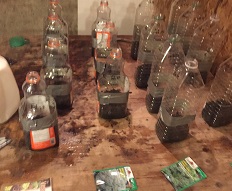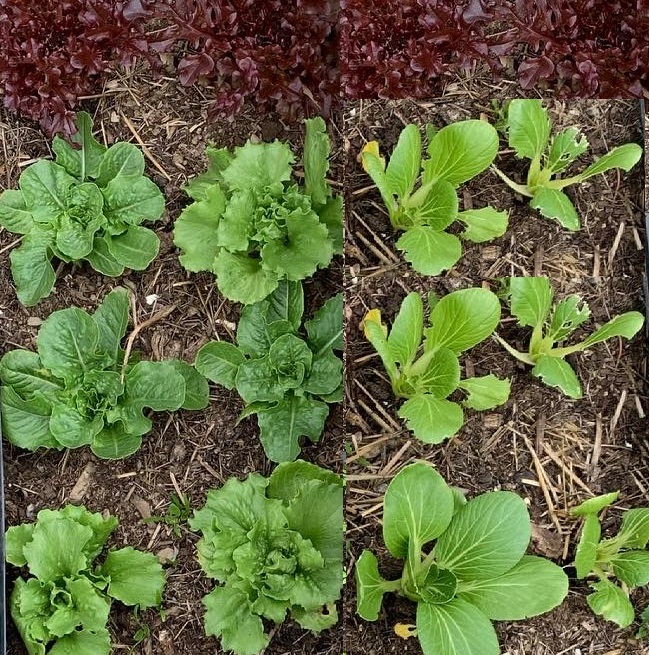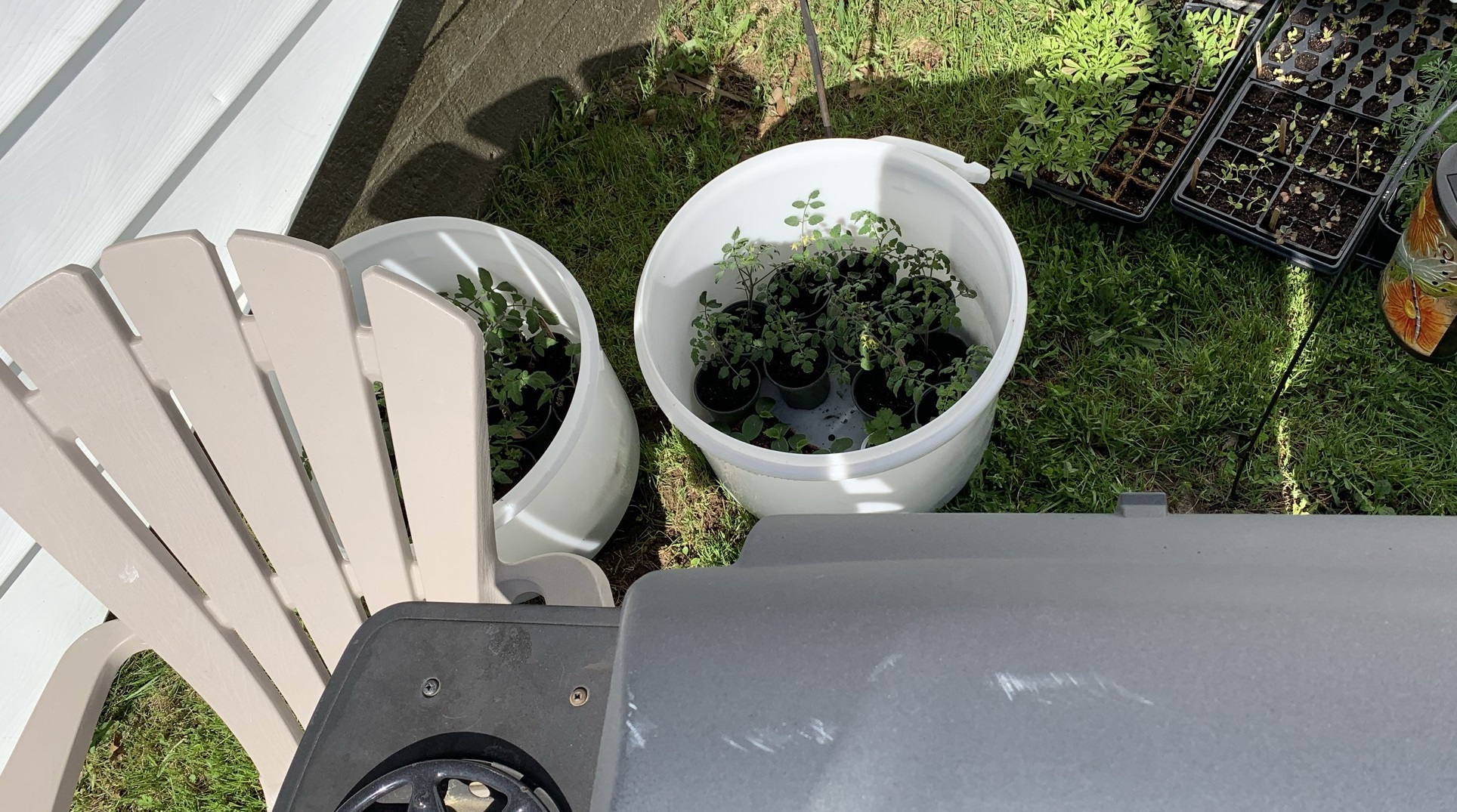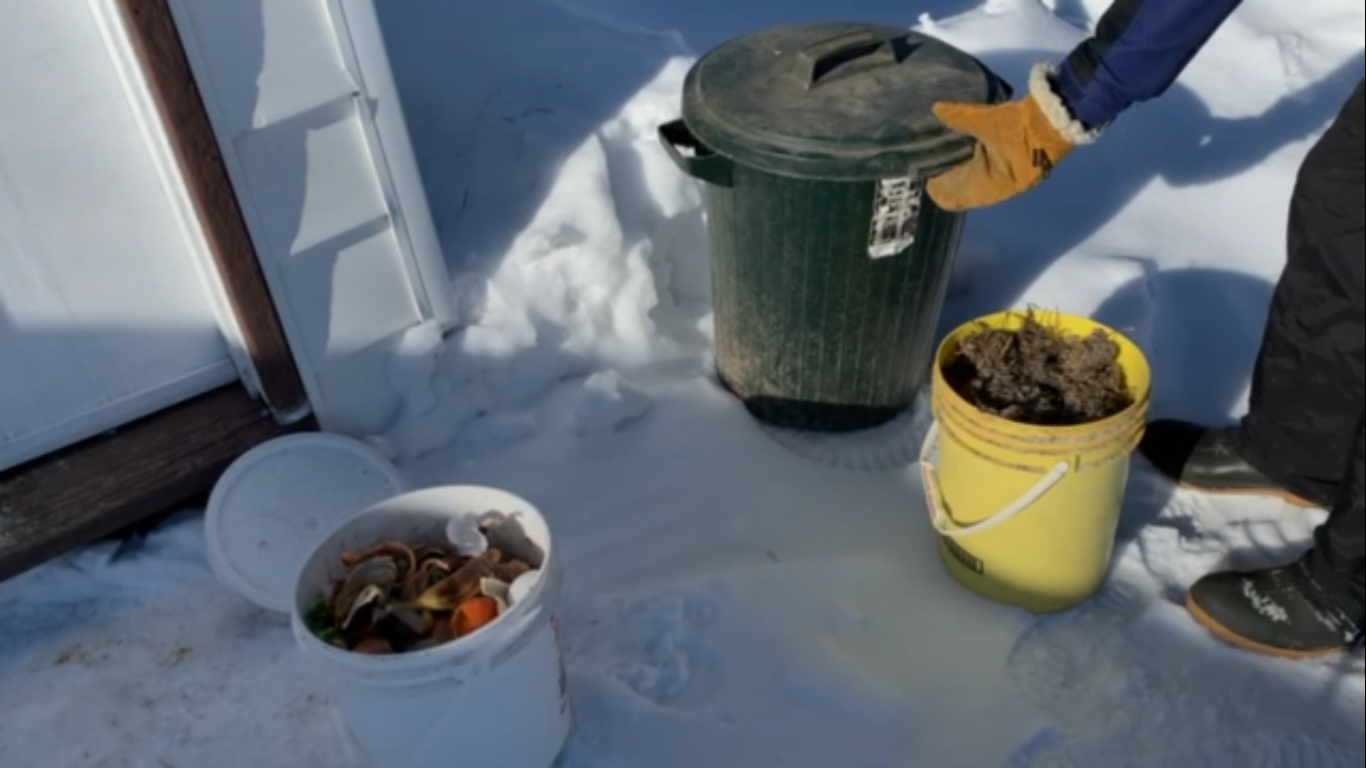Having trouble starting seeds indoors? Try winter sowing as a fun alternative.
Winter sowing, also known as milk jug gardening, is a neat way to beat the winter blahs and get a jump on spring. This surprisingly effective method is especially useful for anyone who struggles to keep plants alive indoors.
How Winter Sowing Works?
 Preparing Jugs in Basement
Preparing Jugs in BasementBasically you take a milk jug (preferably one that is see-through) or a clear juice jug and use it as a mini-green house for your plant. You need to drill a few drainage holes in the bottom of the jug and maybe one or two holes low on the sides as well. Cut the jug on 3 sides about one third of the way up from the bottom. Some people cut the top completely off. Soak some potting soil and put two to three inches of the wet soil in the bottom of the jug. Sprinkle a few seeds, cover them lightly with soil, and tape the jug closed with duct tape.
Then put it out in the snowbank and forget about it. The only two concerns are to make sure the soil doesn’t dry out and that the weather doesn’t get unseasonably warm and cause the plants to germinate prematurely. If you notice that there is no condensation inside the containers, you will want to water them either through the lid, or by bottom watering (setting them is a pan of water and letting it soak up into the soil.
Some people leave the cap on the jug until the weather warms. Others leave the cap off to allow the rain and snow to keep the soil watered. The seeds will freeze and thaw, freeze and thaw, and eventually when the weather is right, they will germinate.
When the plants fill the containers, they are ready to transplant. You won’t even need to harden them off. It is already done for you.
What Seeds to Use
Winter sowing was originally developed with perennial flowers in mind, but this method also works for cold hardy veggies such as kale, broccoli, spinach, Brussels sprouts, and lettuce.
Although you are technically not winter sowing, later in the spring you can even start your heat loving plants such as tomatoes, peppers, cucumbers, squash, and pumpkins this way.
The Advantages of Winter Sowing over Starting Seeds Indoors
The real beauty of winter sowing is that you don’t need grow lights and timers, you don’t have to worry about plants damping off, you don’t need to harden off your plants, and it doesn’t use up limited space in your house.


